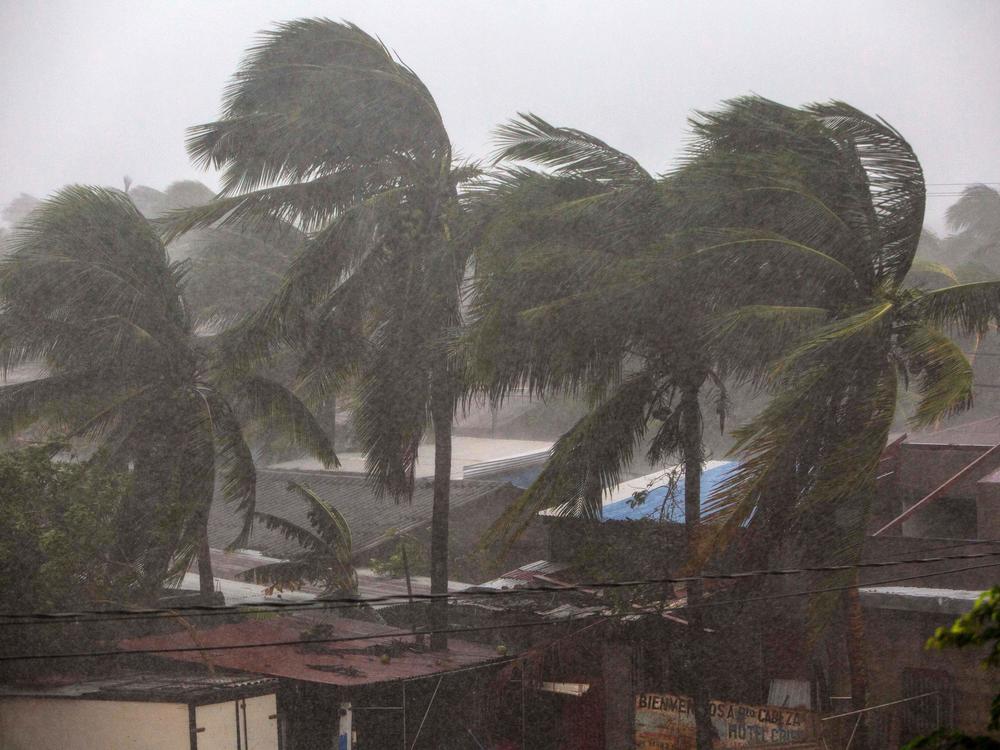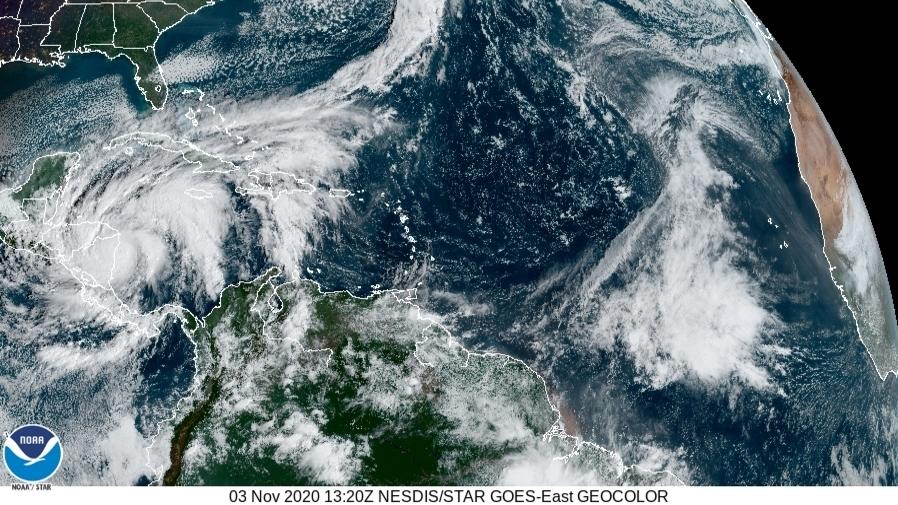Section Branding
Header Content
Hurricane Eta Lashes Nicaragua's Coast As Forecasters Warn Of 'Catastrophic' Flooding
Primary Content
Updated at 10:40 a.m. ET
The center of Hurricane Eta, a Category 4 storm with sustained winds of 145 miles per hour, was nearing the coast of Nicaragua on Tuesday, pummeling homes and potentially bringing life-threatening flooding to Central America's Caribbean coast.
Eta was peeling off roofs, downing trees and power lines in and around Puerto Cabezas, also known as Bilwi, in Nicaragua's north, according to the country's disaster management agency, known as SINAPRED. The region of landfall is one of the country's poorest.
As of 10 a.m. ET, the center of the storm was located about 30 miles south-southeast of Bilwi, where Hurricane Felix killed 100 people in 2007.
The U.S.-based National Hurricane Center warned that Eta, which has rapidly moved up the Saffir-Simpson scale from a Category 1 system on Monday, would batter Nicaragua with "catastrophic" winds, storm surge and flooding and possible landslides. The storm is expected to linger in the region for the remainder of the week, intensifying the flooding threat.
The NHC cautioned that flash flooding and river flooding might occur as far away as Haiti and the Cayman Islands. Forecasters said the Nicaraguan coast should expect storm surge up to 15 feet above normal tides.
Eta is the 28th named storm of the 2020 Atlantic hurricane season, tying the record for most storms set in 2005. It is conjuring memories of Hurricane Mitch, one of the deadliest Atlantic hurricanes on record, which killed an estimated 11,000 people in Nicaragua and Honduras in 1998. Mitch, which spun up into a Category 5 hurricane, suddenly lost power before its landfall in Honduras, slowing and loitering offshore, where its intense range and storm surge took a heavy toll.
The hurricane has rapidly intensified in the past couple of days, becoming an "extremely dangerous storm" that led Nicaragua to issue a red alert warning.
"This city of 70,000 people is very vulnerable," Javier Plat, a local Catholic Priest in Puerto Cabezas, told Reuters. "We have houses made of wood and adobe, the infrastructure of the residential houses is our main vulnerability."
In Nicaragua, SINAPRED said it had evacuated some 6,000 families. Authorities also moved patients from the Nuevo Amanecer hospital in Bilwi to safe shelter, according to Today Nicaragua.
The Nicaraguan army sent troops specialized in search and rescue to the region, and the navy on Monday ferried residents from coastal islands. In neighboring Honduras, authorities also evacuated people to shelters from the outer islands and areas most vulnerable to flooding. As a precaution, El Salvador has also evacuated some of its people.
Rosario Murillo, Nicaragua's vice president and first lady, appeared on television Monday, where she prayed for divine protection. "How many hurricanes have come and we have moved on, thanks to God," she said.
Eta is forecast to push into the interior of northern Nicaragua and then hit central Honduras on Thursday, where it is expected to rapidly weaken.
Copyright 2020 NPR. To see more, visit https://www.npr.org.


